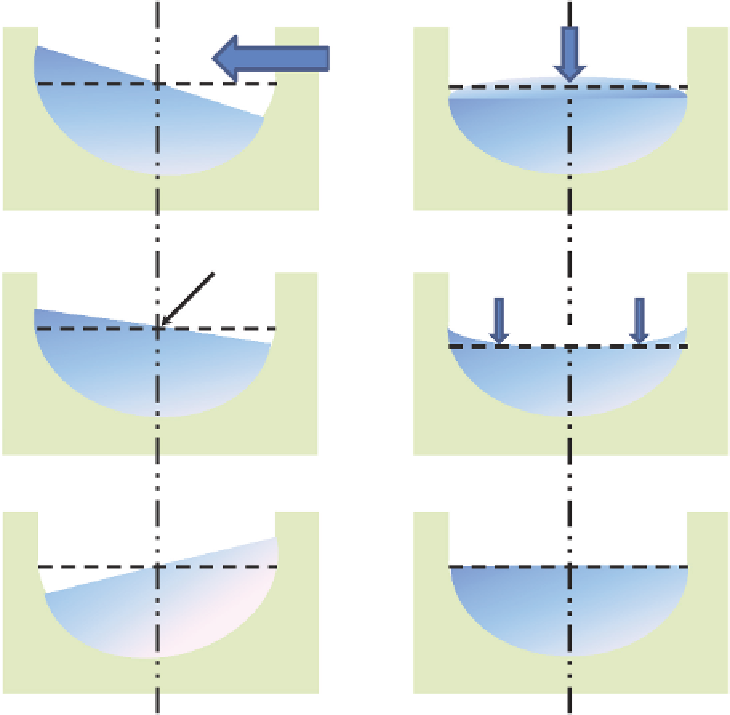Environmental Engineering Reference
In-Depth Information
Air pressure (a binodal example)
By wind (a uninodal example)
High pressure
air mass
Wind
Node
Node
Node
No wind
FIGURE 13.8
Unimodal and bimodal seiches.
13.2.5 I
nternaL
w
aVeS
, u
pweLLInG
Internal waves are more dificult to observe than surface waves but they may be more important in
lake and reservoir mixing. Smaller density differences within the waterbody tend to make internal
waves travel more slowly than surface waves but achieve greater wave heights. At the water sur-
face, the tilt or slope is affected by the large density difference between water and air. However,
across the interface of a two-layered stratiied lake, the density differences are relatively small.
Therefore, the magnitude of the tilt of the interface can be many times that of the surface tilt.
For example, Cole (1975) described a remarkable internal wave in Lake Baikal, with a period of
38 days and an amplitude of 75 m. Theoretically, a surface tilt on the order of 10 cm could have
energized that wave (Martin and McCutcheon 1999). Internal seiches with magnitudes of >10 m
are common in Lake Michigan (Wetzel 2001).
Internal waves include standing waves like internal seiches (Mortimer 1974) and internal hydrau-
lic jumps (French 1985), but most are progressive waves that radiate energy away from the point of
disturbance where the waves were generated (Ford and Johnson 1986). Wind shear, water withdraw-
als, hydropower releases, thermal discharges, as well as local disturbances produce internal waves.
Internal waves can propagate and break similar to surface waves (Wetzel 2001).
Internal seiches can be detected by changes in the temperature-depth proiles where the depth
of the thermocline moves upward or downward in the water column. If the interface tilt is large

Search WWH ::

Custom Search